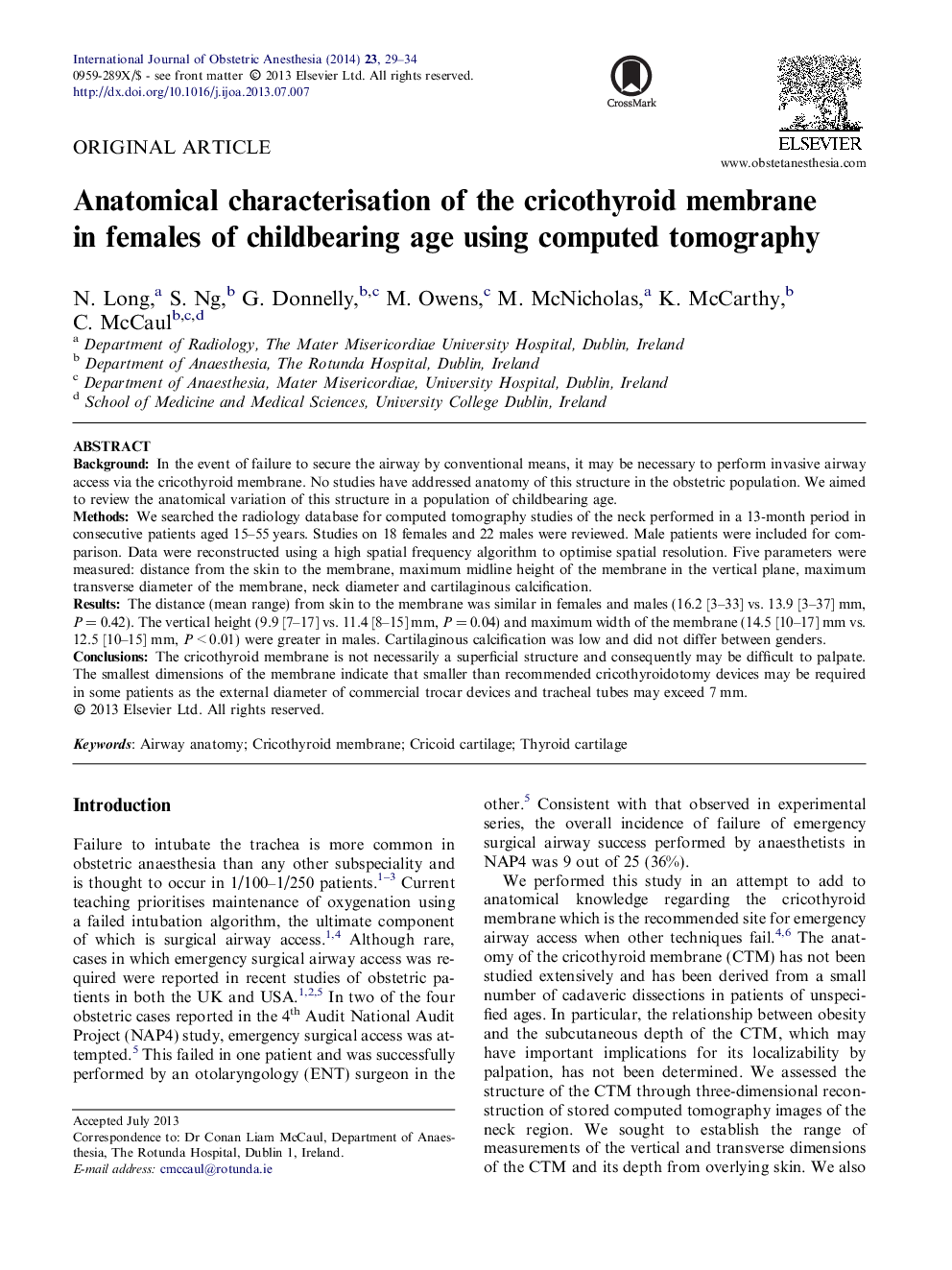| Article ID | Journal | Published Year | Pages | File Type |
|---|---|---|---|---|
| 2757776 | International Journal of Obstetric Anesthesia | 2014 | 6 Pages |
BackgroundIn the event of failure to secure the airway by conventional means, it may be necessary to perform invasive airway access via the cricothyroid membrane. No studies have addressed anatomy of this structure in the obstetric population. We aimed to review the anatomical variation of this structure in a population of childbearing age.MethodsWe searched the radiology database for computed tomography studies of the neck performed in a 13-month period in consecutive patients aged 15–55 years. Studies on 18 females and 22 males were reviewed. Male patients were included for comparison. Data were reconstructed using a high spatial frequency algorithm to optimise spatial resolution. Five parameters were measured: distance from the skin to the membrane, maximum midline height of the membrane in the vertical plane, maximum transverse diameter of the membrane, neck diameter and cartilaginous calcification.ResultsThe distance (mean range) from skin to the membrane was similar in females and males (16.2 [3–33] vs. 13.9 [3–37] mm, P = 0.42). The vertical height (9.9 [7–17] vs. 11.4 [8–15] mm, P = 0.04) and maximum width of the membrane (14.5 [10–17] mm vs. 12.5 [10–15] mm, P < 0.01) were greater in males. Cartilaginous calcification was low and did not differ between genders.ConclusionsThe cricothyroid membrane is not necessarily a superficial structure and consequently may be difficult to palpate. The smallest dimensions of the membrane indicate that smaller than recommended cricothyroidotomy devices may be required in some patients as the external diameter of commercial trocar devices and tracheal tubes may exceed 7 mm.
